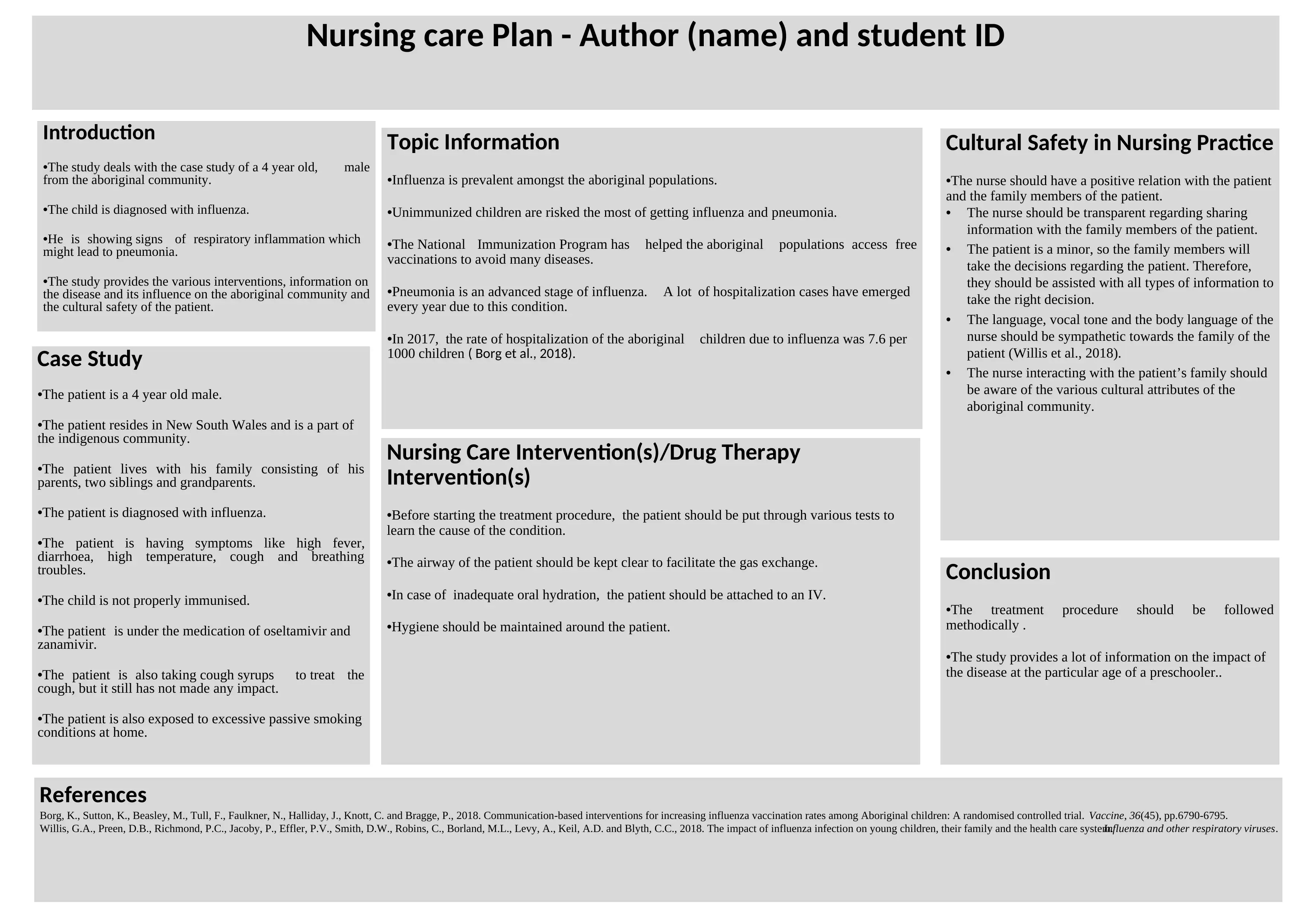NUR332 - Nursing Care Plan: Cultural Safety & Influenza in Child
VerifiedAdded on 2023/05/27
|1
|647
|358
Case Study
AI Summary
This case study presents a nursing care plan focused on a 4-year-old aboriginal boy diagnosed with influenza, a condition prevalent among aboriginal populations, especially in unimmunized children who are at higher risk of developing pneumonia. The plan emphasizes the importance of cultural safety in nursing practice, highlighting the need for nurses to establish positive relationships with the patient and their family, maintain transparency in information sharing, and be aware of cultural attributes within the aboriginal community. Interventions include diagnostic tests, airway management, IV hydration in cases of inadequate oral hydration, and medications like oseltamivir and zanamivir. The study acknowledges the impact of influenza on young children and their families, noting high hospitalization rates among aboriginal children due to influenza. The case also mentions the child's exposure to passive smoking at home, which needs consideration. The provided references support the communication based interventions to increase influenza vaccination rates among Aboriginal children.





![[object Object]](/_next/static/media/star-bottom.7253800d.svg)